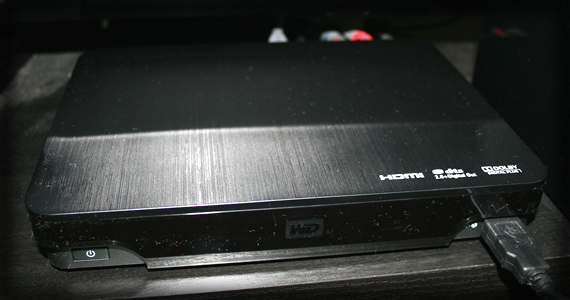This complete media center review examines Western Digital's WD TV Live Hub as a complete digital entertainment solution combining 1TB internal storage with extensive format support and network connectivity during the critical transition from physical media to digital streaming consumption. Eric Wilborn provides thorough evaluation of video playback features, streaming service connection, and user experience improvements while positioning the device against emerging competitors like Boxee and Roku in the evolving home theater market. The coverage captures the period when standalone media players competed to bridge the gap between computer-based media libraries and television consumption before smart TV connection became standard.
The video format compatibility analysis covers complete support for AVI, MPG, VOB, MKV, MP4, MOV, and subtitle file handling that addressed the fragmented digital media landscape when format standardization remained inconsistent across content sources and encoding methods. The streaming service connection evaluation examines Netflix, Hulu, YouTube, and Facebook video access alongside network connectivity enabling content access from multiple sources, demonstrating early recognition of hybrid local-cloud media consumption patterns. The audio and music capability assessment details universal audio format support, playlist recognition, and 1TB internal storage supplemented by dual USB ports providing extensive local media library management during the period when personal media collections required big storage solutions.
The connectivity and interface analysis encompasses multiple output options including composite, component, and HDMI 1.4 connections supporting televisions spanning 15 years of technology evolution, with Toslink digital audio output ensuring high-quality sound reproduction for premium content formats. The user experience evaluation covers intuitive navigation, customizable organization, effortless firmware updates, personalized backgrounds, weather information connection, and app ecosystem including AccuWeather, Facebook, Flickr, Picasa, gaming platforms, and RSS feed support. The network features assessment examines seamless file transfer features enabling remote media library management over network connections, eliminating physical connection needs for content addition and organization.
The competitive positioning analysis encompasses comparison against Boxee and Roku platforms during the early streaming device market development, $199.99 pricing strategy targeting enthusiast consumers, and feature differentiation through integrated storage combined with streaming features. The upgrade experience evaluation covers improvements from second-generation WD TV devices, ongoing feature discovery through firmware updates, and the evolution from standalone media players toward complete entertainment platforms. The target market assessment examines positioning for "gadget nuts" seeking complete solutions, holiday gift recommendations, and the balance between local storage features and streaming service connection.
This WD TV Live Hub review represents the critical media consumption transition period when dedicated media center devices competed to establish dominant platforms before smart TV connection and phone casting simplified home entertainment access. Looking back 13+ years later, Western Digital's approach combining local storage with streaming features proved prescient as hybrid consumption models became standard, though integrated smart TV platforms and cloud storage ultimately reduced demand for standalone media centers. The extensive format support documented addressed real fragmentation challenges that influenced modern media platform development toward universal compatibility, cloud transcoding, and seamless cross-device content access. The network file management features established expectations for remote media library control that evolved into modern cloud storage services, phone management, and integrated ecosystem approaches across technology platforms. The app ecosystem connection showd early recognition of platform extensibility needs that became fundamental for smart TV development, streaming device success, and complete entertainment platform differentiation. The firmware update emphasis reflected the importance of ongoing feature development that became standard for consumer electronics, enabling continuous improvement and extended device lifespan through software upgrade. The connectivity versatility highlighted the practical needs for supporting diverse television hardware during technology transition periods, influencing modern device design toward complete compatibility and future-proofing strategies. This moment captures the foundational period when home entertainment evolved from physical media toward digital consumption patterns that established user experience expectations, content access methods, and device connection approaches that continue to influence modern streaming platforms, smart TV development, and digital media consumption worldwide.
This summary was created by Dave Rogers. The original post was written by Eric Wilborn and published on November 1, 2011.
If you'd like to view the original post, you can find it here.
